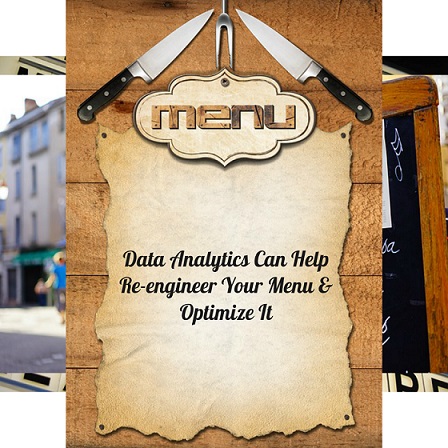How Menu Engineering can Push Up A Restaurant’s Profits
In the first part of this blog post, we had read about how data analytics is being used by restaurants and fast-food chains in customer segmentation.
Today, we will look at how analysis helps to build, or rather, re-build a restaurant’s menu. That’s right. Menu Analytics can play a big role in not only determining a menu but also working “behind the scenes” and improving kitchen efficiency.
One of the oft-quoted examples is McDonald’s. The globally renowned quick service restaurant (QSR) used predictive analytics and transformed its menu into digital avatars primarily because that allowed it to instantly modify menus to suit customer needs, including altering menus in such a way as to suit the local weather conditions or even the time of the day. It’s no secret that depending on whether it’s morning or evening, the same customers order different things, so using predictive analytics, McDonald’s was able to forecast what a customer wanted, and suitably alter the menu.
You do not necessarily have to be in McDonald’s league in order to adopt the same technology.
Well-known food chains, as well as startups, are now increasingly turning to analytics to turn “smart”; they are using in-house data on sales, customers, kitchen supply, even staff performance, combining it with external data such as reviews or comments on social media, weather, and reservation apps, and then deploying analytical dashboards to analyze it, and arrive at conclusions, sometimes, in real-time. In fact, McDonald’s also uses analytics to reduce not only the waiting time at a table but also to tweak its menu at its drive-thru outlets to ensure that drivers do not have to wait any longer than it takes to order food.
Menu Analytics can be used to optimize your menu offering, helping restaurants deliver incredible results in the short term. Get in Touch with us for more information.
A research paper by a team of experts from the Department of Systems and Computer Engineering, Carleton University, Ottawa, Ontario, Canada, for example, speaks of introducing such a “user-friendly” Smart Restaurant Management System. It talks of resolving some key problems faced by restaurants with technologies such as Mobile and Web applications, Internet of Things (IoT), Near-Field Communications (NFC) sensors, and Cloud computing.
According to the team behind this research, “restaurants have many inefficiencies due to human limitations that can be resolved through automation and device-to-device communication.” The Smart Restaurant Management System accomplishes this by using a smartphone app for customers and a web app for restaurant staff members. The mobile app allows customers to have a seamless dining experience with features such as finding available parking spaces. The web app, on the other hand, provides restaurant staffers with being able to collect data and statistics on the restaurant’s performance in real-time and automating the order placement system for waiters and cooks via IoT technology.
Download Free e-Book to Understand the Use Of Analytics In QSRs
Menu Engineering or Menu Psychology
Analytics can be used to optimize your menu offering, helping restaurants deliver incredible results in the short term. It can help detect and delete items on the menu that are slow-moving, thus optimizing it.
However, one must remember there’s no single method that can be used for menu analysis. Cost-Margin Analysis, for example, pinpoints items that are low in food cost, and return a higher than average gross profit. But this method is seen to work well for restaurants in highly competitive, price-sensitive markets.
A QSR aims to turn around their customers quickly, without keeping them waiting. It needs to monitor its drive-through lanes to determine which items to display on its digital menu board. When the vehicle queues are longer, the menu must feature items that can be prepared quickly. When shorter, the menu features higher-margin items that may take a bit longer to prepare. But all this is possible only if the fast-food service’s ability to get data in real-time.
QSR analytics, thus, can help managements identify low-margin items with a high order to delivery time. They can then filter the low-demand ones from the list and optimize the menu accordingly.
Footfall counting: Restaurants can deploy a machine to count the number of people walking in and out, and measure it against table occupancy, time is taken to serve a customer, and so on.
Restaurants can use product analytics to identify which items are selling more and less. This helps improve kitchen efficiency because every product comes attached with a cost. If restaurants can track their fast-moving items vis a vis at the slow ones, it can lead to better inventory management, and they can significantly reduce margins on buying.
In addition to all the forms of analysis that can help restaurants, there’s one more called Guest Analytics. This form involves customer segmentation and the creation of personas. Solutions offer a single CRM for analytics and guest engagement.
Before signing out, let’s not forget that there are many data points in a restaurant, leading to an incredibly rich array of data. Restaurants including QSRs can and must leverage this to their advantage.
This is the last part of this series of blog posts.
An Engine That Drives Customer Intelligence
Oyster is not just a customer data platform (CDP). It is the world’s first customer insights platform (CIP). Why? At its core is your customer. Oyster is a “data unifying software.”
Liked This Article?
Gain more insights, case studies, information on our product, customer data platform

